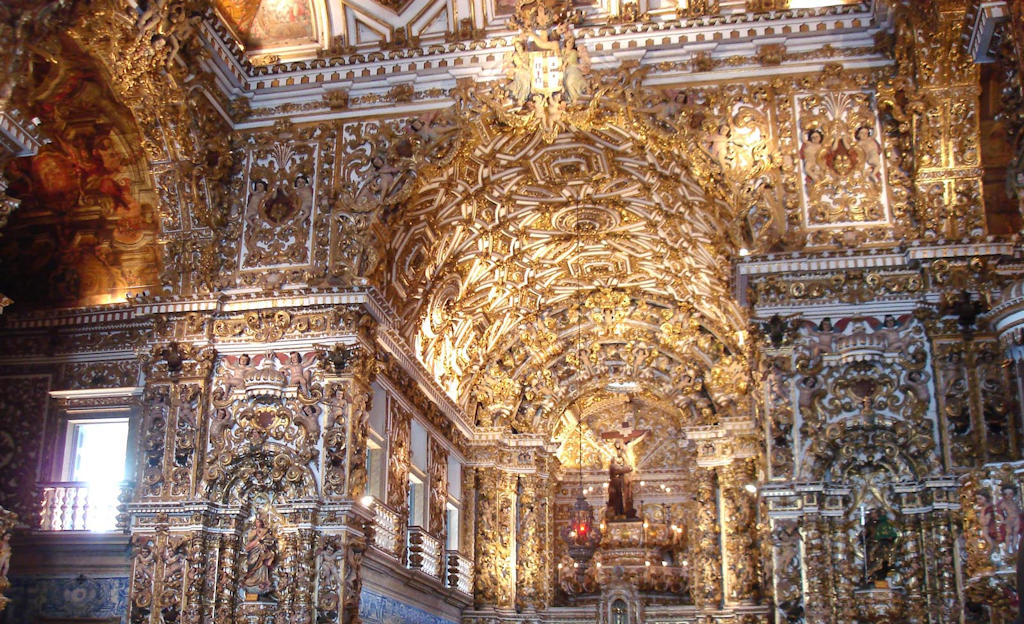The origins of gilded woodcarving in Portugal can be traced back to the Gothic era. During this period, woodcarving in Portugal drew inspiration from architectural models and incorporated elements from sculpture and goldsmithing. The characteristic features of Gothic arches, pinnacles, and columns were integrated into the wooden structures. The architectural parts of these altarpieces were meticulously carved and adorned with gold, while the remaining elements were left in plain wood or painted in vibrant colors. Although many altarpieces from the Gothic era did not survive, those that remain exemplify the international artistic taste of the time, such as the main altarpiece in the old Coimbra Cathedral.
The Manueline style, which followed the Gothic period, continued to draw inspiration from architectural elements. It prominently featured portal structures and incorporated heraldic symbols, armillary spheres, the Cross of Christ, and sculpted naturalistic elements. Notable examples include the altarpieces and Choir Stalls from the Convent of the Order of Christ in Tomar and the Monastery of Alcobaça. While the original works have disappeared, the monumental Choir Stalls from the Santa Cruz Monastery in Coimbra serve as a testament to the Manueline style. The wood gilt during this period was influenced by northern European styles but adapted to the Portuguese aesthetic.
During the Renaissance, gilded woodcarving in Portugal took a different approach by employing painting and sculpture rather than intricate gold carving. The carved wood decorations closely resembled stone forms, as seen in portals, tombs, and goldsmithing. The preference for large altarpieces made of stone or paintings limited the development of woodcarving as an independent form of expression, relegating it to a decorative art.
Lisbon.vip Recommends
The Baroque period saw the most monumental phase of woodcarving in Portugal and Brazil. Following the end of Spanish rule and the restoration of Portuguese independence, gilded woodcarving in Portugal developed its distinct style, deviating from Spanish Baroque models. The discovery of Brazilian gold and diamonds, combined with Portugal's wealth, allowed for the flourishing of Baroque art in various forms, including gilded woodcarving. The Portuguese Baroque style, known as "Joanina," incorporated classical references, spiral columns, angels, garlands, and other ornate elements. The churches of São Francisco and Santa Clara in Porto exemplify this opulent style, with their lavish gilded woodcarving covering every available surface and giving them a mesmerizing golden cave-like appearance.
During the Rococo period, gilded woodcarving in Portugal reached its most extravagant and ornate expression. Influenced by the opulent style of the time, Rococo gilded woodcarvings featured an array of intricate details including shells, volutes, angels, and leaves, adorned with lavish amounts of gold. This period saw the emergence of various regional styles, adding diversity and originality to the art form. From Lisbon to Coimbra and the north of Portugal, Rococo altarpieces showcased the fusion of Rococo and "Joanino" elements, resulting in stunning compositions that covered entire walls with golden splendor. The Rococo period exemplifies the grandeur and exuberance of gilded woodcarving in Portugal's artistic history.



